-
 Bitcoin
Bitcoin $115800
-2.47% -
 Ethereum
Ethereum $3690
1.19% -
 XRP
XRP $3.105
-1.91% -
 Tether USDt
Tether USDt $0.9999
-0.07% -
 BNB
BNB $771.0
0.19% -
 Solana
Solana $179.9
-3.54% -
 USDC
USDC $0.9998
-0.03% -
 Dogecoin
Dogecoin $0.2291
-3.40% -
 TRON
TRON $0.3140
0.81% -
 Cardano
Cardano $0.8007
-1.24% -
 Hyperliquid
Hyperliquid $42.92
-0.44% -
 Stellar
Stellar $0.4212
-2.16% -
 Sui
Sui $3.730
0.03% -
 Chainlink
Chainlink $18.06
0.03% -
 Bitcoin Cash
Bitcoin Cash $546.6
5.08% -
 Hedera
Hedera $0.2438
0.55% -
 Avalanche
Avalanche $23.57
-0.81% -
 Litecoin
Litecoin $114.2
1.04% -
 UNUS SED LEO
UNUS SED LEO $8.970
-0.35% -
 Shiba Inu
Shiba Inu $0.00001363
-0.16% -
 Toncoin
Toncoin $3.136
-0.89% -
 Ethena USDe
Ethena USDe $1.001
-0.04% -
 Uniswap
Uniswap $10.30
1.42% -
 Polkadot
Polkadot $4.013
-0.06% -
 Monero
Monero $324.8
0.87% -
 Dai
Dai $0.9999
-0.04% -
 Bitget Token
Bitget Token $4.509
-1.38% -
 Pepe
Pepe $0.00001226
-2.60% -
 Aave
Aave $291.8
1.34% -
 Cronos
Cronos $0.1294
2.19%
Top liquid staking strategies
Liquid staking lets users stake crypto while keeping liquidity by receiving tradable tokens like stETH or stSOL, which can be used in DeFi for added yield.
Jul 24, 2025 at 10:01 am
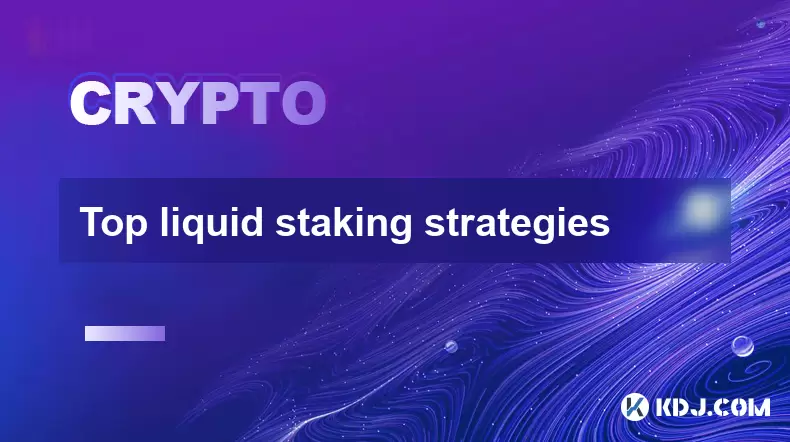
Understanding Liquid Staking
Liquid staking is a mechanism that allows users to stake their cryptocurrencies while maintaining liquidity. Traditional staking often locks assets for a specific period, preventing users from accessing them even if market conditions change. With liquid staking, users receive liquid tokens in return for their staked assets, which can be used across various DeFi platforms. These tokens represent the staked amount and can be traded, lent, or used as collateral. This innovation addresses the issue of illiquidity in traditional staking models and enables users to maximize their returns.
Choosing the Right Blockchain Protocol
Before diving into liquid staking, it’s essential to choose a blockchain protocol that supports this feature. Ethereum, Solana, and Cosmos are among the most popular networks offering robust liquid staking solutions. Each network has its own set of liquid staking derivatives, such as stETH on Ethereum, stSOL on Solana, and stkATOM on Cosmos. When selecting a blockchain, consider factors like network security, staking yield, and token utility. Also, ensure the protocol has a strong track record and transparent governance.
Selecting a Trusted Liquid Staking Provider
The next step involves choosing a trusted liquid staking provider. Platforms like Lido Finance, Rocket Pool, and StakeWise offer reliable services for liquid staking. These platforms issue liquid tokens in exchange for your staked assets and handle the staking process on your behalf. When evaluating providers, consider the following:
- Reputation and community trust
- Annual percentage yield (APY) offered
- Fee structure and tokenomics
- Smart contract audits and security measures
It's crucial to avoid providers with unrealistically high yields, as they may indicate high risk or potential rug pulls.
Staking Process and Token Receipt
Once you've selected a provider, the staking process typically involves the following steps:
- Connect your wallet to the liquid staking platform
- Approve the transaction for token conversion
- Receive liquid tokens representing your staked assets
For example, when you stake ETH on Lido Finance, you receive stETH, which can be used in DeFi protocols like Aave or Curve. These tokens accrue staking rewards over time, and their value may fluctuate based on market demand. Always ensure you're using the official platform and double-check contract addresses to avoid phishing scams.
Utilizing Liquid Tokens in DeFi Ecosystems
After obtaining liquid staking tokens, users can leverage them in various DeFi applications to generate additional yield. Some of the most common strategies include:
- Providing liquidity in AMM-based protocols like Uniswap or Balancer
- Depositing into lending platforms such as Aave or Compound
- Yield farming with liquidity provider (LP) tokens
Each strategy comes with its own risk-reward profile. For instance, liquidity provision may expose users to impermanent loss, while lending involves smart contract and liquidation risks. It's important to assess risk tolerance and capital efficiency before deploying funds.
Monitoring and Managing Staking Positions
After staking and deploying liquid tokens, ongoing monitoring and management are essential. Users should regularly check:
- APY fluctuations due to network participation
- Token price movements and peg deviations
- Smart contract updates and protocol changes
Some platforms offer dashboard analytics or mobile apps to help users track performance. It's also advisable to stay updated with governance proposals and community discussions related to the staking provider. If a token deviates significantly from its peg, it may indicate liquidity issues or systemic risks.
Frequently Asked Questions
Q1: Can liquid staking tokens be used as collateral for loans?
Yes, many DeFi platforms accept liquid staking tokens as collateral. Protocols like Aave and MakerDAO have integrated support for stETH, stSOL, and similar tokens. However, users should be aware of liquidation thresholds and interest rates associated with borrowing.
Q2: Are there tax implications for liquid staking?
Tax regulations vary by jurisdiction, but in many cases, staking rewards are considered taxable income. Additionally, swapping or selling liquid tokens may trigger capital gains taxes. Consult a tax professional or use crypto tax software to ensure compliance.
Q3: What happens if the liquid staking provider is hacked?
If a liquid staking platform suffers a security breach, users may lose access to their liquid tokens and the underlying staked assets. That's why it's crucial to choose audited protocols and diversify across multiple platforms to mitigate risk.
Q4: Can I unstake my assets anytime with liquid staking?
Unlike traditional staking, liquid staking allows users to exit positions anytime by selling or swapping their liquid tokens on decentralized exchanges. However, unstaking directly from the protocol may involve withdrawal delays or slashing penalties, depending on the network.
Disclaimer:info@kdj.com
The information provided is not trading advice. kdj.com does not assume any responsibility for any investments made based on the information provided in this article. Cryptocurrencies are highly volatile and it is highly recommended that you invest with caution after thorough research!
If you believe that the content used on this website infringes your copyright, please contact us immediately (info@kdj.com) and we will delete it promptly.
- Pump, Bonk, Buyback: A Wild Ride in Crypto Town!
- 2025-07-25 19:10:12
- Punisher Coin, Dogecoin, Shiba Inu: Meme Coin Mania in the 2025 Crypto Landscape
- 2025-07-25 19:10:12
- Celestia's Token Control: Buyback & Staking Overhaul in Focus
- 2025-07-25 19:50:11
- Altcoins, Bitcoin, and Crypto Coins: What's Hot in the NYC Crypto Scene?
- 2025-07-25 19:55:52
- Litecoin Price Breakout Imminent? Rally Potential Explored!
- 2025-07-25 17:30:12
- Ether ETFs Surge, Bitcoin Wobbles: Is an ETH Breakout Imminent?
- 2025-07-25 16:50:12
Related knowledge
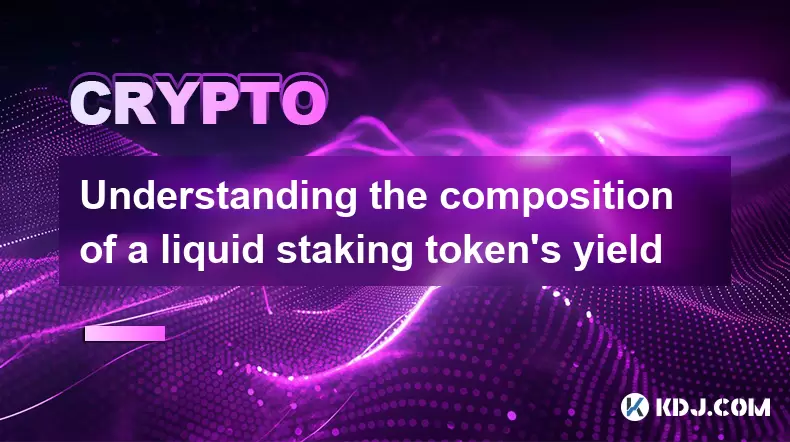
Understanding the composition of a liquid staking token's yield
Jul 20,2025 at 09:07am
What Is a Liquid Staking Token?A liquid staking token is a representative asset issued to users who stake their native cryptocurrency on a proof-of-st...
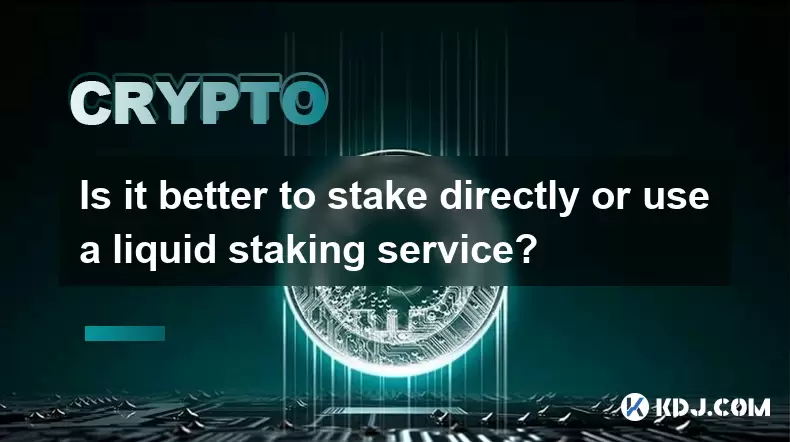
Is it better to stake directly or use a liquid staking service?
Jul 22,2025 at 08:21pm
Understanding the Basics of StakingStaking in the context of blockchain and cryptocurrency refers to the process of locking up digital assets to suppo...

What to do during an LST depeg event
Jul 20,2025 at 04:57pm
Understanding LST Depeg EventsAn LST (Liquid Staking Token) depeg event occurs when the token, which is typically pegged to the value of the underlyin...
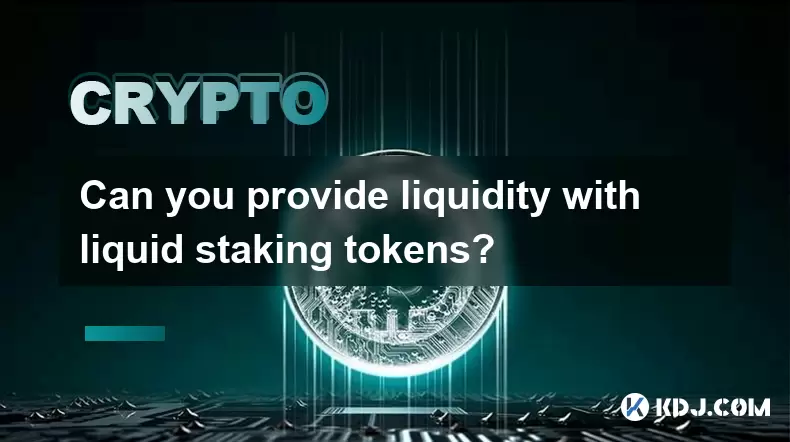
Can you provide liquidity with liquid staking tokens?
Jul 22,2025 at 10:22am
Understanding Liquid Staking TokensLiquid staking tokens (LSTs) are derivative tokens that represent staked assets on a proof-of-stake (PoS) blockchai...

What are the best wallets for storing LSTs?
Jul 21,2025 at 03:14pm
Understanding LSTs and the Need for Secure StorageLSTs, or Liquid Staking Tokens, are derivative tokens representing staked assets on a blockchain. Wh...
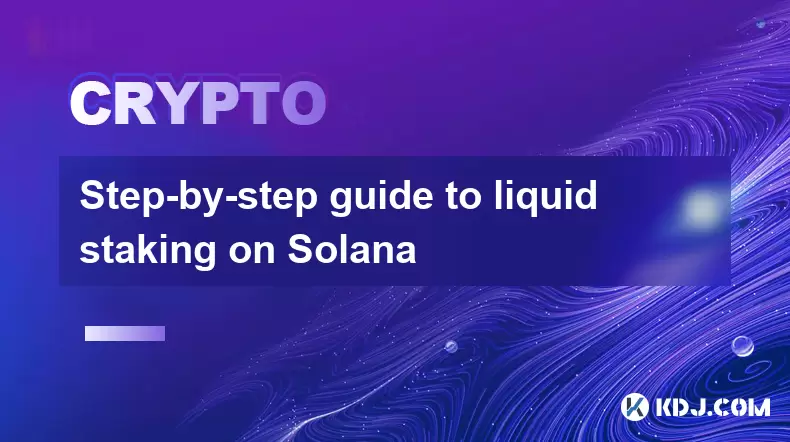
Step-by-step guide to liquid staking on Solana
Jul 20,2025 at 06:42am
What is Liquid Staking on Solana?Liquid staking is a mechanism that allows users to stake their cryptocurrency while retaining liquidity through the i...

Understanding the composition of a liquid staking token's yield
Jul 20,2025 at 09:07am
What Is a Liquid Staking Token?A liquid staking token is a representative asset issued to users who stake their native cryptocurrency on a proof-of-st...

Is it better to stake directly or use a liquid staking service?
Jul 22,2025 at 08:21pm
Understanding the Basics of StakingStaking in the context of blockchain and cryptocurrency refers to the process of locking up digital assets to suppo...

What to do during an LST depeg event
Jul 20,2025 at 04:57pm
Understanding LST Depeg EventsAn LST (Liquid Staking Token) depeg event occurs when the token, which is typically pegged to the value of the underlyin...

Can you provide liquidity with liquid staking tokens?
Jul 22,2025 at 10:22am
Understanding Liquid Staking TokensLiquid staking tokens (LSTs) are derivative tokens that represent staked assets on a proof-of-stake (PoS) blockchai...

What are the best wallets for storing LSTs?
Jul 21,2025 at 03:14pm
Understanding LSTs and the Need for Secure StorageLSTs, or Liquid Staking Tokens, are derivative tokens representing staked assets on a blockchain. Wh...

Step-by-step guide to liquid staking on Solana
Jul 20,2025 at 06:42am
What is Liquid Staking on Solana?Liquid staking is a mechanism that allows users to stake their cryptocurrency while retaining liquidity through the i...
See all articles

























































































